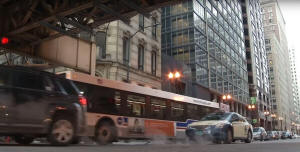|
“The risks are huge, especially when you see Chicago just
getting downgraded by S&P,” Dabrowski told The Center Square.
“You're seeing the concerns about the city budget, about Brandon
Johnson. Of course, concerns about crime and the big news on the
Chicago Transit Authority and their big deficits. You've got
that continued pressure of all those things as well as crime
coming together to make the Doom Loop still a possibility.”
Overall, real estate firm CBRE reports the share of Loop area
available office space rose over the final three months of 2024
to 26.3%, marking the 10th consecutive quarter that the vacancy
rate hit an all-time high.
At the same time, the lingering effects of remote work continue
to slow supply and demand, with downtown office users
collectively vacating 1.6 million square feet more last year,
prompting city officials to now stand behind a plan where
taxpayers would be called upon to chip in roughly $250 million
in tax-increment financing to convert empty Loop office space
into apartments.
Dabrowski wonders if any of that will be enough, given he’s
convinced the city’s overall trajectory continues downward.
“I think we're still heading in the wrong direction,” he said.
“Most of the decisions that Brandon Johnson is making are bad
for business and bad for people. The kinds of things he's doing
is chasing people away, and I'd say the same thing for Gov.
Pritzker. He continues to raise costs in the city and in the
state. It keeps giving people a reason to leave.”
Dabrowski has his own ideas about what path he feels would be
more sustainable.
“They could start by lowering property taxes,” he said. “Chicago
has the highest commercial property taxes in the country for all
the big cities. They're trying to do a congestion tax that also
hurts people coming in. Really, what they have to do is obsess
about making the city more attractive and less expensive and
everything they should do should be around reducing the cost to
operate in Chicago.” |
|




